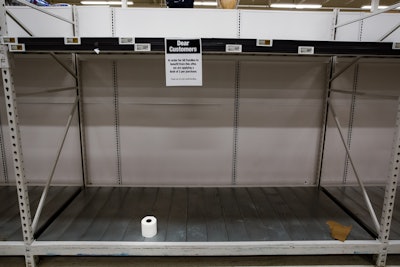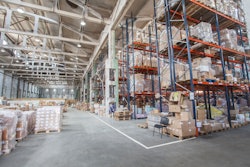
The stresses of the pandemic over the past year affected daily life in many ways. Perhaps the most unexpected ones were the impacts on consumers’ ability to purchase the products they needed. No one will quickly forget the bare shelves in the toilet paper and paper towel aisles, and of course, the ongoing need for hand sanitizer.
This level of demand on the markets may have been unprecedented, but it’s also not over. Many indicators are predicting that what we saw in the past 12 months is what we’ll continue to see in the next 12 months -- volatility.
And, it’s not just because of the pandemic. While the Coronavirus disease (COVID-19) continues to put outsized demand on a wide range of industries, from new cars to pet food, other forces are also causing supply chain issues. For example, USA Today recently reported on an expected chlorine shortage for the upcoming summer season because “the Bio-Lab factory, which produces pool and spa treatment products, experienced a devastating fire after the landfall of Hurricane Laura.”
Of course, pandemic-related examples of dramatic imbalances between supply and demand are also all around us. The scarcity of semiconductors (chips) is causing manufacturing delays that are suppressing supply, while demand remains strong. The result is inflated prices for everything from automobiles to appliances.
These examples are a reminder that managing supply and demand will be an ongoing challenge for businesses. Particularly when we consider that for many of last year’s most sought-after items, the pendulum has swung the other way. Last week, The Wall Street Journal reported on the surplus of the very hand sanitizers that consumers paid top-dollar for only a year ago. The article notes that retailers and manufacturers are now offering deep discounts and giveaways to reduce their surplus supplies. That same issue is being felt in the apparel industry, which is facing an unexpected glut of face masks, according to CBS News.
What to do with surplus? Choose wisely.
Managing surplus is likely another, and permanent, output of the pandemic which, according to PracticalEcommerce “sparked an increase in ecommerce sales, but also generated a massive rise in product returns.”
As all businesses know, handling returns is costly. Not just in the staff and resources needed to process them, but in finding ways to resell returned items. Often these businesses have three choices -- offer the items to their customers at a discount; donate them or leverage the secondary market. Of course, each of these options comes with additional considerations that include financial and customer service implications for the business, as well as extended impacts that reach as far as local communities, and most significantly, the environment.
Discounted – or even free – items. A January article by CBS News reports that major retailers are “weighing the cost of processing customer returns against items' resale value. Often, it doesn't make financial sense to ask customers to send their purchases back.” This emerging approach to returns is hardly surprising as retailers recognize the daunting cost of processing, and attempting to resell, returned items.
Of course, offering discounts on surplus supply remains a good option for businesses to gain some financial return on their inventory and does benefit consumers who can better afford those products.
Donating. What is happening to all that excess hand sanitizer? Much of it is being donated to communities and non-profit groups. This is a good solution when there is still a need for the product – one that offers benefits both to the retailer/manufacturer and the recipient.
Unfortunately, donating is not always a viable solution. For some products, demand cannot always be found for unwanted quantities. In those instances, donated items end up not in consumers hands, but instead in landfills.
Secondary market. Secondary markets are generally defined as post-retail channels that provide businesses with a way to sell and buy returned, surplus or other unwanted goods. There are substantial advantages to leveraging this market for surplus products. One of the most significant is that it allows more companies to embrace the circular economy through reuse and resale. This significantly cuts down on landfill waste, which greatly benefits the environment.
Additionally, the secondary marketplace fuels entrepreneurial efforts. Particularly during the pandemic, this market fueled a new segment of buyers who made a business out of buying surplus products then reselling them through channels such as mom-and-pop stores, flea markets and others.
As increased volatility in supply and demand channels becomes the norm, business leaders are rethinking traditional approaches to long-standing business problems and many are recognizing that this volatility is having an outsized impact on the management of excess inventory. As with most complex problems, there are no “silver bullet” solutions and business leaders should demand options, including partners that provide omni-channel solutions in the secondary market.
Whether it’s for the sake of their bottom line, customers, the community or the environment, considering the full impact of surplus will become more and more necessary.












